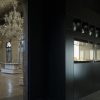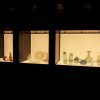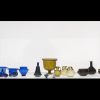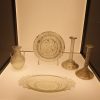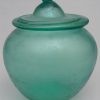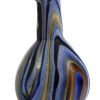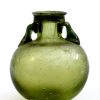The history of glass spans more than four thousand years.
An ancient legend will have it that it was created by chance along the sandy banks of a river in Syria. Phoenician merchants used saltpetre blocks to make camp fires that, when they melted and mixed with sand, gave birth to this new material.
According to other theories, the advent of glass resulted from the fusion processes of certain metals. Production centres in ancient times were found in Mesopotamia, Egypt and Syria. From the tenth century BC glass began to spread throughout the Balkans and southern Europe, before reaching the whole Mediterranean in the Hellenistic age (fourth – first century BC).
However, it was the Romans who gave new life to glass production, so that it became extremely widespread. The invention in Palestine of the glass-blowing technique goes back to the first century BC, replacing the painstaking procedures of pouring molten glass and resulting in the creation of colourless glass. The production of blown-glass and blowing glass into a mould was perfected even further during the second and third centuries AD.
The works on display here are testimony to this development, offering a wide variety of objects from Syria, Palestine, the Eastern, Greek, North-Italian, Mediterranean areas, etc. and, above all, an extensive collection of Roman art objects from the first and fourth centuries AD, from the Archeological Heritage Department. Coming from the necropolis of Enona, Asseria and Zara in Northern Dalmatia, this collection includes cinerary urns in blown glass and other objects that were placed in tombs, offering an important example of the ancient forms and techniques that were to be a source of inspiration for Murano glass makers.
Such samples include plates and goblets shaped in moulds and then cut and engraved, glasses decorated with bosses or messages of good wishes, unguentariums (perfume bottles) of various shapes and with different decorations including multicoloured rods, and various blown-glass objects, some of which are decorated with different coloured glass threads.
Finally, on display in this room are also some of the fragments of the “archaeology” of Murano glass, which go back to the Middle Ages (tenth – eleventh century) and were discovered in the foundations of the nearby San Donato Basilica.
